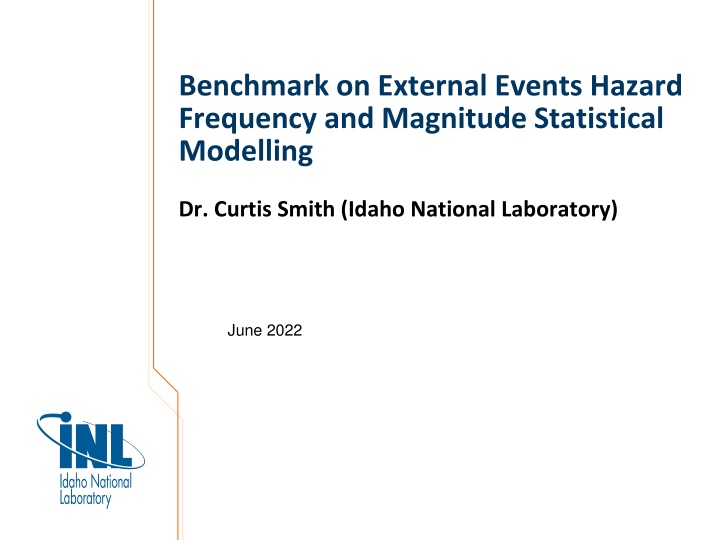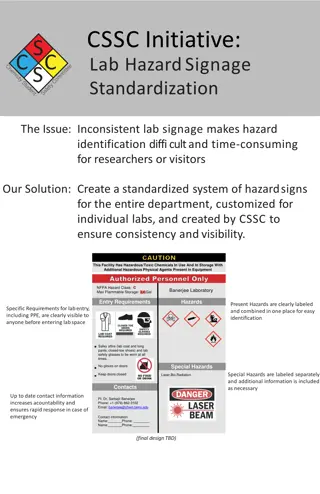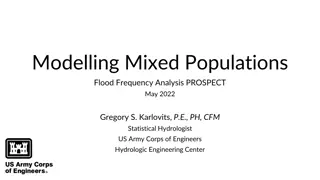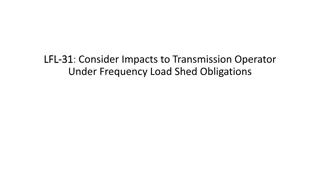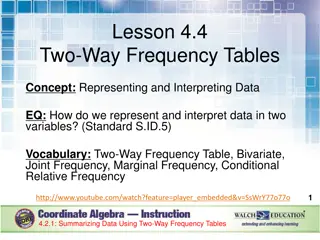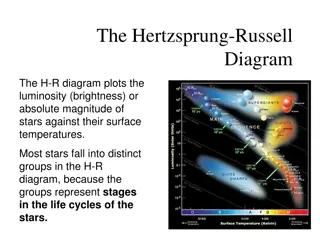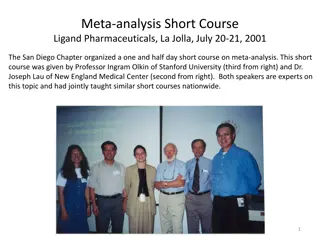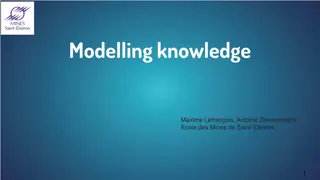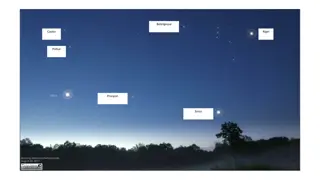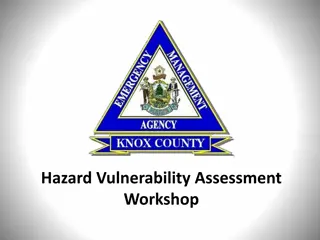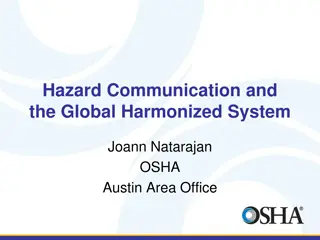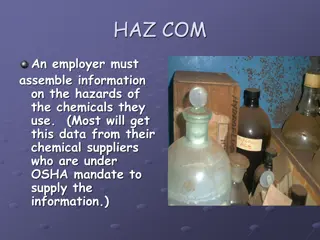Statistical Modelling of Hazard Frequency and Magnitude in External Events
Dr. Curtis Smith from Idaho National Laboratory presented a benchmark on External Events Hazard Frequency and Magnitude Statistical Modelling. The background involves the Working Group on External Hazards (WGEV) addressing the challenges in formulating and assessing external event initiating events (IEs) using statistical models. The WGEV administration, participants, and completed activities showcase a collaborative effort in dealing with hazard scenarios related to external events.
Uploaded on Sep 27, 2024 | 2 Views
Download Presentation

Please find below an Image/Link to download the presentation.
The content on the website is provided AS IS for your information and personal use only. It may not be sold, licensed, or shared on other websites without obtaining consent from the author.If you encounter any issues during the download, it is possible that the publisher has removed the file from their server.
You are allowed to download the files provided on this website for personal or commercial use, subject to the condition that they are used lawfully. All files are the property of their respective owners.
The content on the website is provided AS IS for your information and personal use only. It may not be sold, licensed, or shared on other websites without obtaining consent from the author.
E N D
Presentation Transcript
Benchmark on External Events Hazard Frequency and Magnitude Statistical Modelling Dr. Curtis Smith (Idaho National Laboratory) June 2022
Motivation How to deal with this? 2
Background Working Group on External Hazards (WGEV) from OECD/NEA took on this challenge Hazard initiating event (IE) is starting point for the risk models IE both contributes to risk quantification results and provides the boundary conditions for the hazard scenarios Current practice has shown a variety of technical approaches, models, and limitations in validation of external events IE Benchmark intended to capture commendable practices in formulating and assessing quantification of external event IEs when using statistical models Open to a variety of technical communities Academia, government agencies, industry, research institutes, and Technical and Scientific Support Organizations 3
WGEV Administration WGEV Chair: Min Kyu Kim (KAERI, South Korea) WGEV Bureau: John A. Nakoski Vice Chair (NRC, USA), ShiZhong Lei (CNSC, Canada), Dana Havlin Novakova (SONS, Czechia), Vincent Rebour (IRSN, France), Gernot Thuma (GRS, Germany), Stef Carelsen (ANVS Netherlands) WGEV Participants from: Belgium (BelV), Bulgaria (Kozloduy NPP), Canada (CNSC, OPG), Czech Republic (SONS), Finland (STUK), France (IRSN, EdF), Germany (GRS), Japan (NRA), Netherlands (ANVS), Poland (PPA), Romania (Cernavoda NPP), Spain (CSN), South Korea (KAERI), Sweden (SSM), Switzerland (ENSI), United States (NRC, DOE, EPRI) International Atomic Energy Agency, and World Metrological Organization Established in 2014
Example Completed Activities for WGEV NEA/SEN/SIN/WGEV(2015)1 Technical Note on Severe Weather with Concurrent Flooding and High Winds NEA/CSNI/R(2017)13 Proceedings for the Workshop on Severe Weather and Storm Surge NEA/CSNI/R(2018)7 Examination of Approaches for Screening External Hazards NEA/SEN/SIN/WGEV(2018)1 Topical Report on Riverine Flooding NEA/SEN/SIN/WGEV(2018)13 Proceedings for the Workshop on Riverine Flooding NEA/CSNI/R(2020)9 Concepts and Definitions for Protective Measures in Response to External Flooding Hazards
Benchmark on External Events Hazard Frequency and Magnitude Statistical Modelling (1/3) Objective The objective of this benchmark study was to facilitate an exercise on statistical modelling in order to better understand the quantitative technical analysis steps and processes used for assessing hazard frequency and magnitude for external events risk assessment. The global objective of the benchmark study launched by the OECD, is to focus on an initiating event induced by an external hazard. The statistical modelling of a hazard frequency and magnitude is of a particular interest in this benchmark.
Benchmark on External Events Hazard Frequency and Magnitude Statistical Modelling (2/3) Scope The scope of the benchmark study included hypothetical data describing the external hazard comes from synthetic models for two cases : Case 1 : a fully-revealed open case where both the synthetic data and the synthetic model producing the data is provided ; Case 2 : a blinded-test case where only the synthetic data is provided.
Benchmark on External Events Hazard Frequency and Magnitude Statistical Modelling (3/3) Participants were asked to describe the assumptions made to create the hazard frequency/magnitude model(s), the qualitative and quantitative results of the model(s), the process used to assess the adequacy of the model(s), and the results of the model adequacy assessment. Phenomenological-based evaluation and modelling was not considered since only observational-type data (derived from a synthetic model) is provided, resulting in statistical-types of models to be considered. Participants: EdF, Finnish Meteorological Institute, INL (two groups), IRSN, KAERI, Romney Duffey
Process The benchmark exercise process Benchmark proposal Benchmark specification Benchmark draft results and insights technical note Benchmark final results and insights technical note Prepare final CSNI Technical Report 9
What is next? The report has been finalized and edited It will soon be published by OECD/NEA and be made public 11
